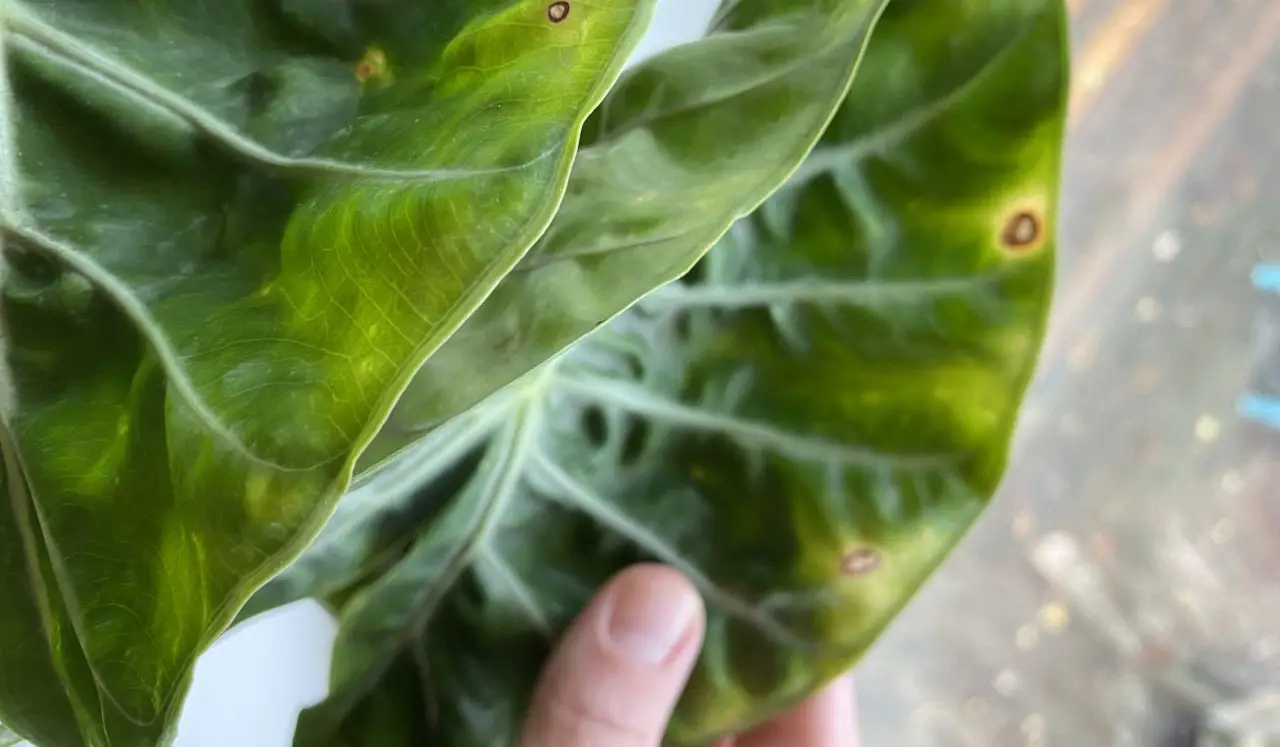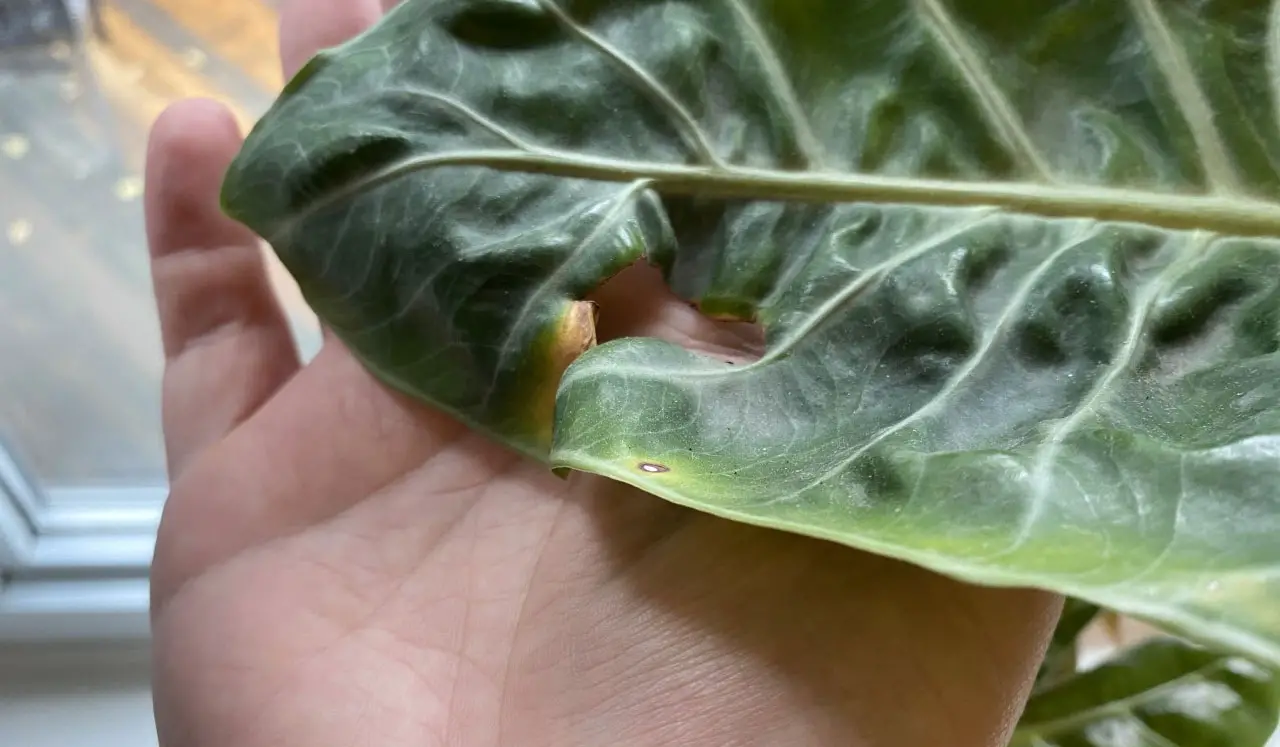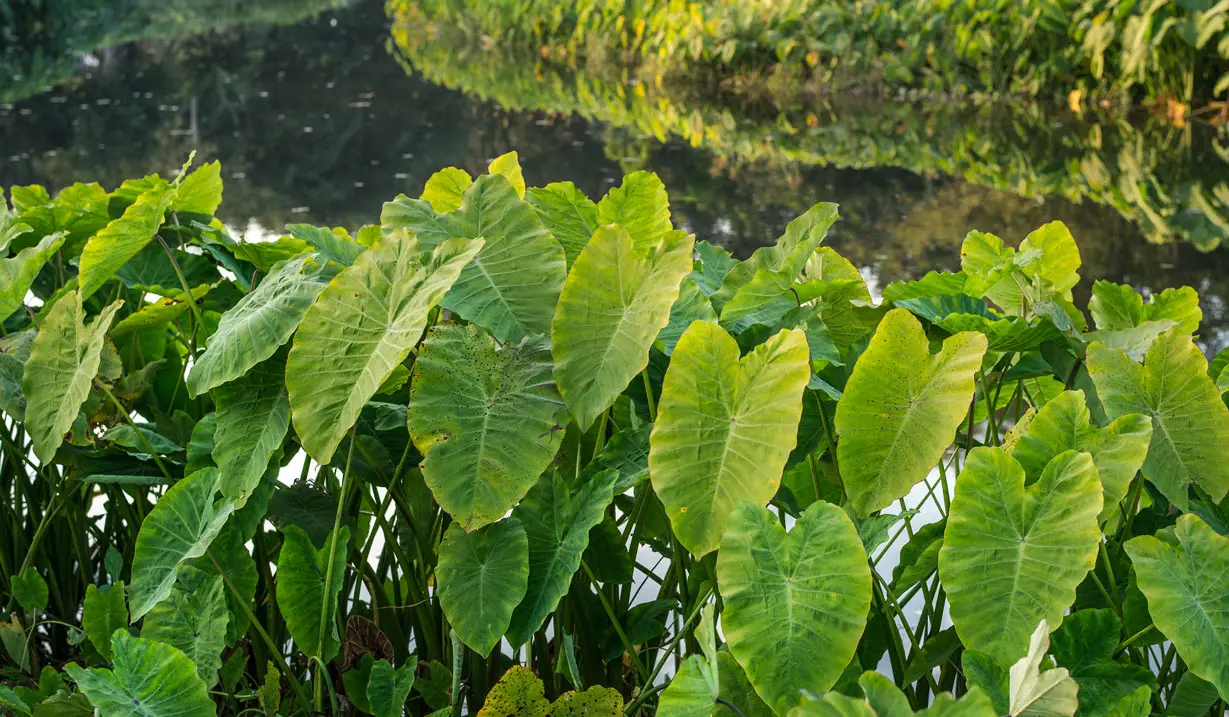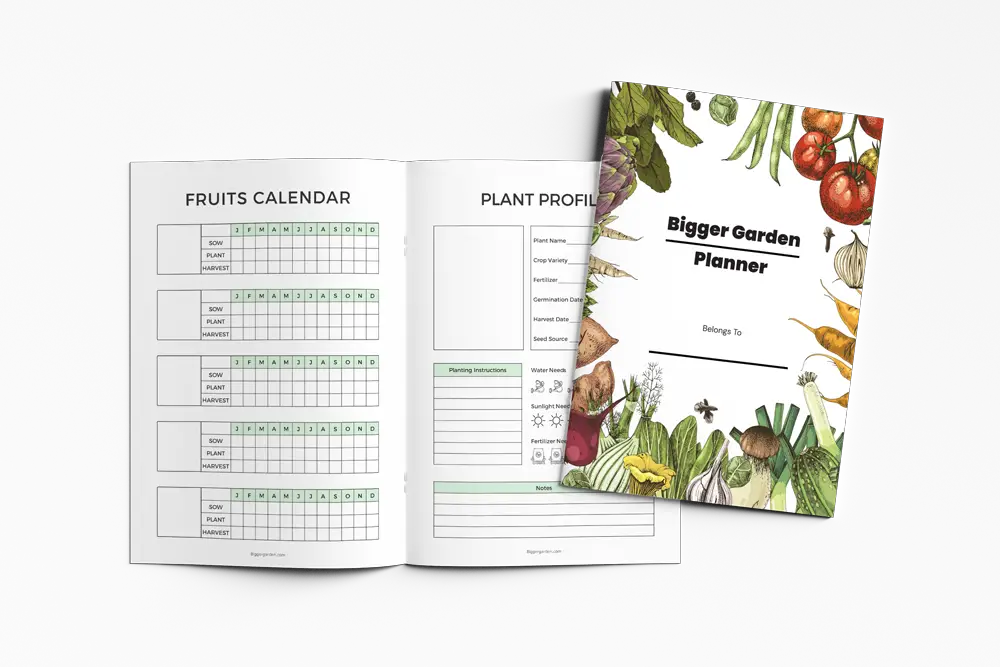Elephant Ears Curling – Is it Normal?

This post follows our research editorial guidelines.

Are your elephant ears starting to curl upward? If so, the first thing you should know is that it’s not normal. Rather, it’s a sign that your elephant ear plant is receiving either inconsistent watering, too much light, or is infested with pests.
The good news is that knowing this is half the battle because once you see this, you can take corrective action to prevent it from happening again.

Table of Contents
Elephant ears – also known as Alocasia – are a beautiful addition to any home or garden, but they are a little bit on the high-maintenance side. Not only do they require a lot of water, warm temperatures, and partial shade, but they also need to grow in moist, nutrient-rich soil for the best results. Trust me, I’ve experimented with them enough to know exactly what they need to grow (after trial and error, of course).
If these conditions aren’t met, you can expect your elephant ear leaves to curl. Fortunately, there are ways to fix this and I’ve outlined some steps for you below to save your curling elephant ears.
Why Are My Elephant Ear Leaves Curling?
The curling of Elephant Ear leaves is a sign of overwatering. While Elephant Ears require more water than most house plants, if planted in a pot with poor drainage the root system will rot and show signs of stress in the form of curling leaves.
Because elephant ears originated in the tropics, they are high-water intake plants, meaning that you’ll probably have to water them every day, maybe once every other day at most.
Your elephant ears getting the amount of water they need is easy if you live in a state like Florida where it rains, at least for a little while, nearly every day. However, it’s much harder when you don’t live in that type of climate because it makes overwatering a lot more possible.
You should expect to water your elephant ears when the soil feels mostly dry or slightly damp. If you water your plant while the soil is too wet, it may lead to the roots becoming waterlogged, which will cause root rot. Curling leaves are a common sign of root rot, and should not be taken lightly.
You can see from the image below, this elephant ear had received to much water while sitting on the shelf at the nursery I visited. I brought this one home to see how I can bring it back to health with some better soil and a bigger pot with draining. Let’s take a closer look at what should be done when you see the dreaded sign of curling leaves. (I’ll give an update once it’s on the mend!)

Watering:
Elephant ears are high-water plants. The more water they receive, the better they do. In order to keep your plants properly hydrated, they need about 2 to 3 inches of water a week.
Too Much Water
As much as these plants love water, there is such a thing as giving them too much of it. Too much water, combined with too much humidity, can eventually lead to pythium rot.
This is serious and can kill your plant. This is why you should ensure that there is proper drainage in your pot to keep your elephant ears plant from having this happen to it.
Too Little
Giving your elephant ears plants too little water can also cause issues with them. Considering how regularly you need to water an elephant ear, it can be easy to water too little if you skip watering or fall behind schedule. Some signs of watering your elephant plants too little include drooping, curling, and the leaves starting to wilt. Not to worry.
If you catch these signs early enough, all you need to do is water your plant and it should be back to normal in no time.
Solution: Drainage
Making sure there is some sort of drainage in your plant’s pot is the best way to make sure that you are keeping your elephant ears hydrated enough without worrying about overwatering them.
Ideally, you want to get a pot with drainage holes built into them. This provides your plant the best chance of not having water build up and causing rot or other issues.
If you don’t have a pot that has drainage holes in them, place a layer of gravel or pebbles at the bottom of your pot before you pot your plant. This will provide space at the bottom of the pot for the water to drain without oversaturating the soil.
Light
Elephant ears love light just as much as they love water. However, the key word in this sentence is ALMOST.
Though elephant ears typically grow best in sunlight, too much sun exposure can actually damage the leaves and cause them to curl up. This is because excessive sunlight actually scorches the leaves, resulting in them curling and turning brown alongside the edges.
When it comes to giving your elephant ears the perfect amount of light, make sure that they have access to shade when temperatures are at their highest during the middle of the afternoon.
These plants thrive best when they’re grown in an area that receives partial sun and shade.
How to Measure Light
If you’re new to taking care of elephant ears, you may be wondering how you can ensure your plant has sufficient lighting conditions to grow successfully.
The good news is that, like most things, there’s an app for that. No, seriously! Available on both iPhone and Android, you can easily access light meter apps, such as the PPFD Meter and Photone – Grow Light Meter for Plants.
These apps basically measure illuminance – aka how much sun your plant is getting from its particular location, allowing you to make changes, as necessary. Unfortunately, these apps aren’t always super reliable, so you may have to turn to older, more traditional methods of measuring light exposure.
The easiest way to measure the amount of light your elephant ears are getting (without the use of a fancy app) is to analyze the color of the leaves.
Not only will leaves getting too much light start to curl, but according to Julie Weisenhorn and Natalie Hoidal, two extension horticulture educators from the University of Minnesota Extension, plants that receive insufficient light “…don’t produce chlorophyll (the green pigment in plants) and plants can turn pale green to yellow to white.”

Humidity
When nurturing elephant ears, humidity is an essential element in ensuring that they grow and stay healthy. They prefer to be in an environment where the humidity is 50% or higher.
One way you can make sure your elephant ear plant is getting the humidity it craves is to set its pot in a saucer of water that is elevated by pebbles. This will keep constant humidity on your plant at all times.
How to Measure Humidity
If you’re looking for a way to ensure that humidity stays consistent for your elephant ear plant, getting a humidifier for the room you’re keeping it in can go a long way. This will allow you to keep humidity at the consistently high rate that it needs.
If you want to keep tabs on the exact level of humidity you have in the room you’re keeping the elephant ear, you need to invest in a hygrometer. This will give an accurate reading of the exact level of humidity in the room at all times and can help you keep your plant from running into problems.
Pests
One thing you need to look out for with elephant ears are pests that can cause harm and damage. Pests that like to go after elephant ears include mites, aphids, and mealybugs.
These pests like to feed off of elephant ears by nibbling on the edges of leaves or sucking the sap from them. This can cause your leaves to turn yellow and curl, which means you need to act quickly to help your plants get better.
How to Prevent Pests
The best way to deal with pests and prevent them from attacking your plant is to use a horticultural soap, which will prevent infestations from happening. If you do end up with these pests, simply wash them off of the leaves using water and then use the horticultural soap to keep them from coming back.
Another option to get rid of pests is to use an oil spray. This is a natural pesticide and will not have any sort of negative impact on the plant or anything that comes in contact with it including humans or animals.
Soil
When growing elephant ears, you must have the right kind of soil for them to grow. Elephant ears need soil that is moist yet well-drained. You can’t oversaturate the soil with too much water otherwise rot will occur at the root.
If you’re looking for the best mix of soil to grow, I recommend using a mix of orchid soil, potting soil, and succulent soil. Make sure the soil is rich in peat and perlite so it can get all the nutrients it needs to grow.
When to Transplant
If you decide to transplant your elephant ears, you should do so during the spring season, as this is when new growth will appear. This time frame usually only refers to elephant ears growing in cooler climates that have frost.
If you live in a warmer climate, you can transfer your elephant ears any time of year. Keep in mind that regardless of when you decide to transfer them, you should try to make the transfer while they’re still small. Otherwise, they could be too big and heavy to make the transfer easily.
Fertilizer
Fertilizer is an important component of healthy plant growth, but too much of it can cause your elephant ear leaves to curl.
Elephant ears prefer rich, well-draining soil. As such, if you plan on using fertilizer, you should take care to use a 20-20-20 fertilizer that gives your elephant ears all the nutrients it needs.
Your elephant ear leaves run the risk of curling if you use fertilizer while the plant is dormant (such as during the winter season), use the incorrect type, or spray it directly onto the leaves.
Adding too much fertilizer can cause leaves to curl, too. If using a 20-20-20 fertilizer, you should only need to fertilize your elephant ears once a month during the growing season to achieve maximum results.
Final Thoughts
Waking up to see the leaves on your elephant ear plant curling can be disappointing, but with the proper care, you can take steps to not only correct the curling but prevent it from occurring moving forward.
